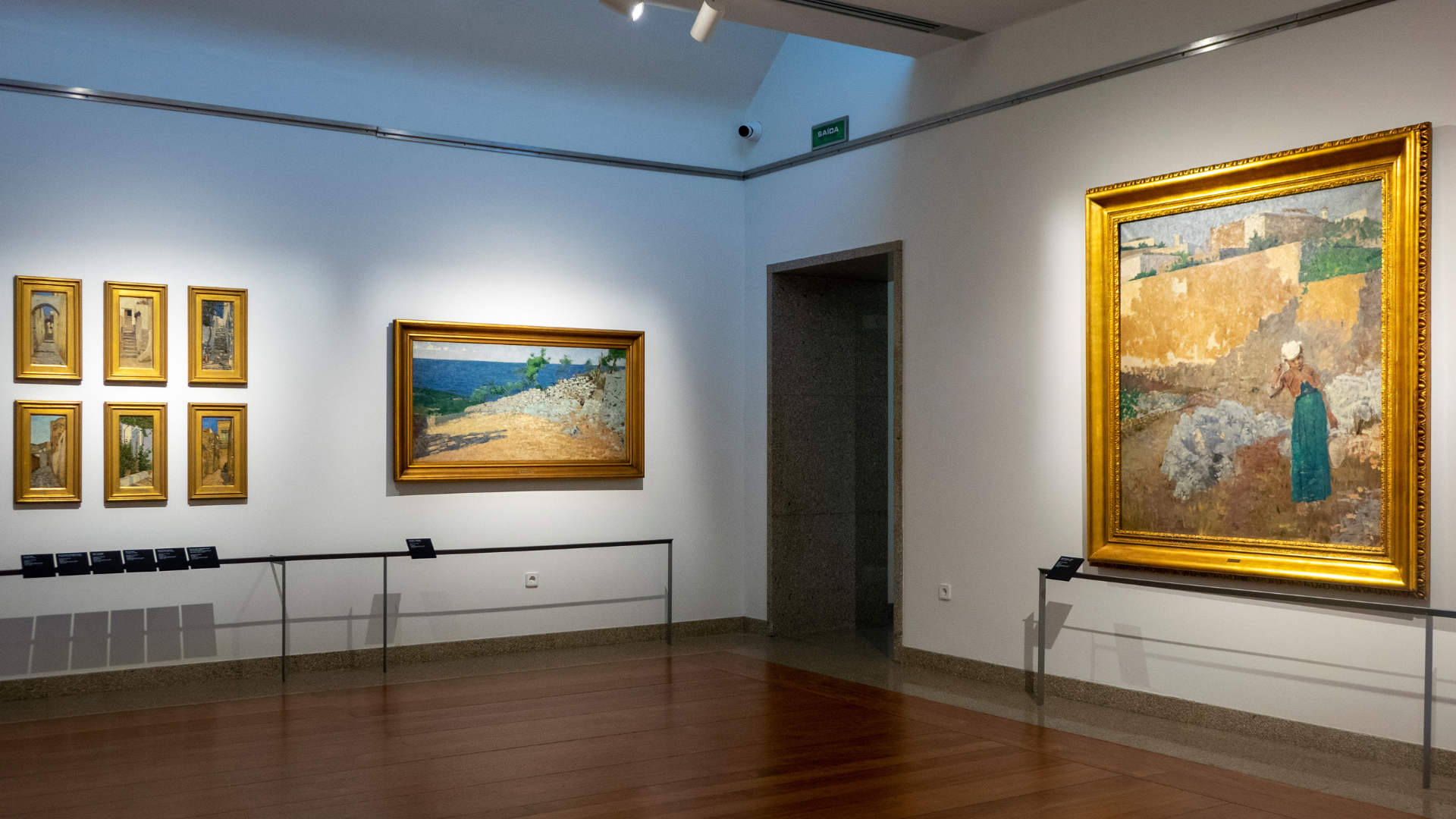As part of the summer programme, a guided tour in Portuguese will take place on 30 September at 3pm on the subject of landscape painting in Naturalism.
The visit will provide an insight into the historical and cultural context in which naturalist painting emerged in Portugal and will show examples of the work of some naturalists from the Porto school, namely Silva Porto, Artur Loureiro, Henrique Pousão and Sousa Pinto.
Naturalism was an aesthetic and artistic movement that emerged in France from 1830, with the creation of the Barbizon School and through the paintings of Théodore Rousseau (1812-1867), Jean-François Millet (1814-1875) and Gustave Courbet (1819-1877).
In Portugal, the naturalist and realist aesthetic of the Barbizon School was introduced by the painters Silva Porto (1850-1893) and Marques de Oliveira (1853-1927), and lasted until the 1920s.
The painters came into contact with this new artistic movement during their stay in France as pensioners of the Portuguese state.
In 1867, the Academies of Fine Arts began awarding scholarships to students abroad. Silva Porto and Marques de Oliveira were the first recipients of scholarships in painting.
They entered the École des Beaux-Arts in Paris in 1873 and, in the forest of Barbizon, lived with a group of artists who followed open-air painting, focussing on the effects of light on the landscape.
Henrique Pousão also went to Paris in 1880. His paintings of roads and streets, courtyards, houses and aspects of Paris bear witness to his creative journey, which culminated in his stays in Rome and Capri.
His work, which reveals the boldness and talent of the young painter and his absolute interest in the values of the painting itself to the detriment of the themes or the narrative, was given, after his premature death, to the Academia Portuense de Belas Artes.
Biographies
António Carvalho da Silva Porto (1850 – 1893)
After completing his studies at the Academia Portuense de Belas-Artes, in 1873 he left for Paris, on a state pension, to study landscape painting. In France he painted in Barbizon, the mythical birthplace of Naturalism, and in Auvers he met Daubigny, one of the masters of the movement.
He exhibited at the Salon in 1876 and 78. Settling in Rome, he travelled with Marques de Oliveira to various cities in Italy.
In 1879 he returned to Italy. The landscapes he presented at the historic exhibition of the Sociedade Promotora das Belas-Artes in 1880 introduced the naturalist aesthetic to Portugal. Around him, a group of young painters gathered for the annual “Exposições de Quadros Modernos” (Exhibitions of Modern Paintings), which Columbano celebrated in 1885 with the collective portrait O Grupo do Leão (The Lion Group).
In the last years of his activity, he developed a painting of regional types and customs, which would be explored in a more exuberant way by José Malhoa and Carlos Reis.
João Marques de Oliveira (1853 – 1927)
He began his artistic apprenticeship at a very young age with the private master António José da Costa, and then enrolled at the Academia Portuense de Belas Artes.
A classmate of Silva Porto, he would continue with him between 1873 and 1879 as a state pensioner abroad, Marques de Oliveira in the Historical Painting class and Silva Porto in Landscape Painting. He left for Paris at the end of 1873 and in 1874 enrolled at the National School of Fine Arts in Paris.
Linked to history painting by his boarding school duties and, later, his teaching, Marques de Oliveira always showed a great sensitivity to nature and landscape studies, which he tried to fix in small prints. His activity as a teacher was remarkable, bringing his students into direct contact with nature, but always insisting on the quality of drawing as the basis of any work.
Like Silva Porto, he was one of the main elements in the introduction of naturalism in Portugal. He died in 1927 and in 1929 he was honoured in Porto with the inauguration of a monument (designed by Soares dos Reis) in his honour in the Jardim de S. Lázaro.

